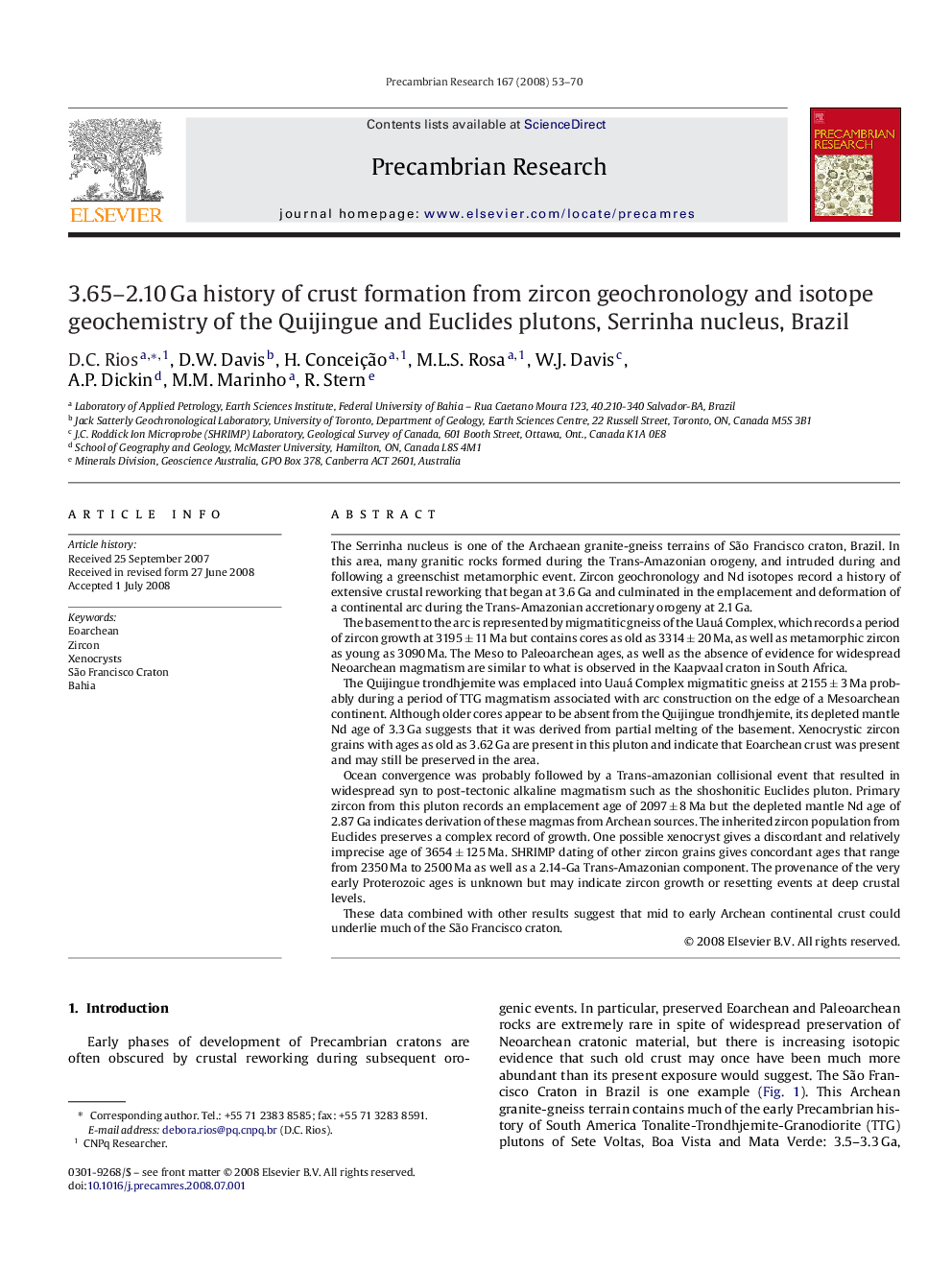| Article ID | Journal | Published Year | Pages | File Type |
|---|---|---|---|---|
| 4724086 | Precambrian Research | 2008 | 18 Pages |
The Serrinha nucleus is one of the Archaean granite-gneiss terrains of São Francisco craton, Brazil. In this area, many granitic rocks formed during the Trans-Amazonian orogeny, and intruded during and following a greenschist metamorphic event. Zircon geochronology and Nd isotopes record a history of extensive crustal reworking that began at 3.6 Ga and culminated in the emplacement and deformation of a continental arc during the Trans-Amazonian accretionary orogeny at 2.1 Ga.The basement to the arc is represented by migmatitic gneiss of the Uauá Complex, which records a period of zircon growth at 3195 ± 11 Ma but contains cores as old as 3314 ± 20 Ma, as well as metamorphic zircon as young as 3090 Ma. The Meso to Paleoarchean ages, as well as the absence of evidence for widespread Neoarchean magmatism are similar to what is observed in the Kaapvaal craton in South Africa.The Quijingue trondhjemite was emplaced into Uauá Complex migmatitic gneiss at 2155 ± 3 Ma probably during a period of TTG magmatism associated with arc construction on the edge of a Mesoarchean continent. Although older cores appear to be absent from the Quijingue trondhjemite, its depleted mantle Nd age of 3.3 Ga suggests that it was derived from partial melting of the basement. Xenocrystic zircon grains with ages as old as 3.62 Ga are present in this pluton and indicate that Eoarchean crust was present and may still be preserved in the area.Ocean convergence was probably followed by a Trans-amazonian collisional event that resulted in widespread syn to post-tectonic alkaline magmatism such as the shoshonitic Euclides pluton. Primary zircon from this pluton records an emplacement age of 2097 ± 8 Ma but the depleted mantle Nd age of 2.87 Ga indicates derivation of these magmas from Archean sources. The inherited zircon population from Euclides preserves a complex record of growth. One possible xenocryst gives a discordant and relatively imprecise age of 3654 ± 125 Ma. SHRIMP dating of other zircon grains gives concordant ages that range from 2350 Ma to 2500 Ma as well as a 2.14-Ga Trans-Amazonian component. The provenance of the very early Proterozoic ages is unknown but may indicate zircon growth or resetting events at deep crustal levels.These data combined with other results suggest that mid to early Archean continental crust could underlie much of the São Francisco craton.
